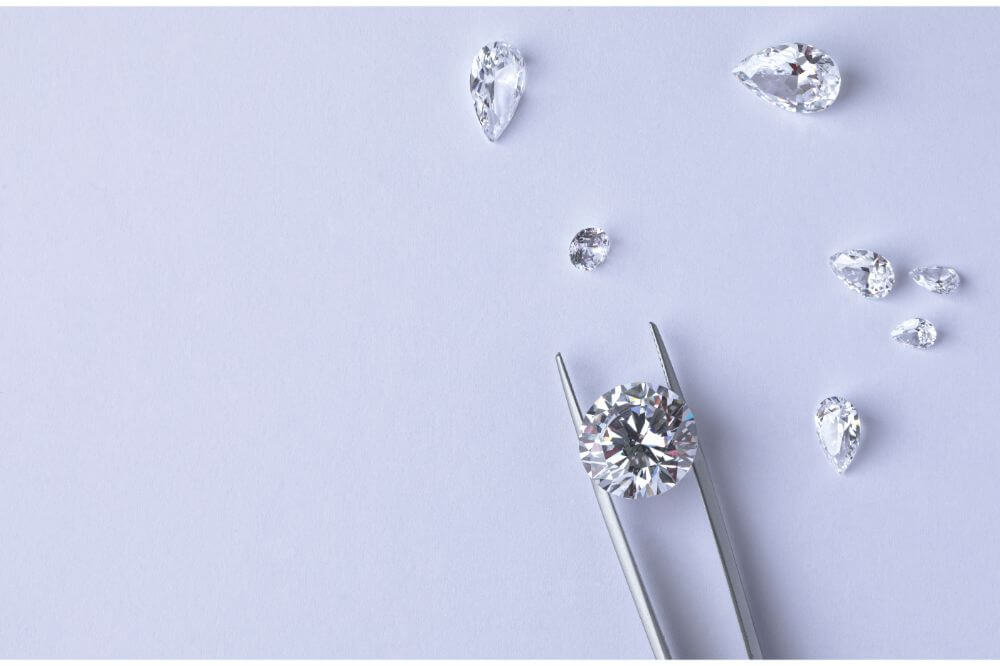Whether you are purchasing an engagement ring, a necklace, bracelet, earrings, or anything in between, a diamond is always one of the best options to consider. Diamonds are lustrous, they shine, and they are a symbol of unending love. That said, not all diamonds are made the same.
Diamonds come in very many different types quality levels, and yes, here we are talking about diamond clarity. Diamonds are generally graded on four different factors, otherwise known as the four Cs.
These are cut, color, carat, and clarity. Today, we are here to take a closer look at what diamond clarity is and we want to take a specific look at what the I2 clarity is. So, what is an I2 clarity diamond?
What is Diamond Clarity?
Clarity is one of the four main factors that diamonds are evaluated on. Clarity refers to the visual appearance and the existence of surface defects, which are called blemishes, and internal characteristics of a diamond, which are known as inclusions.
The more surface defects and internal inclusions a diamond has, the lower the clarity will be. The clearer a diamond is, the fewer inclusions and surface defects it has, therefore allowing more light to shine through. The more inclusions and surface defects, the worse it looks, and the less durable it is.
The Diamond Clarity Chart
To understand what an I2 clarity diamond is, you first need to understand the diamond clarity grading chart as a whole. Let’s take a quick look at the different diamond clarity grades that you can purchase.
- FL (Flawless): This is the highest clarity grade of diamond and here you will not see any inclusions at all.
- IF (Internally Flawless): This is the second highest clarity grade of diamond and this is generally nearly 100% free of any inclusions.
- VVS (Very very slightly included): This category can be separated into VVS1 and VVS2, with VVS1 being an exceptionally clear diamond, with VVS2 being just a little less clear.
- VS (Very slightly included): This category can be separated into two sections, including VS1 and VS2, with VS1 being the slightly clearer one. Here, you will see very small marks that are visible under 10 times magnification and may be seen by the naked eye.
- SI (Slightly included): this category can be divided into two sections, SI2 and SI2. This is one of the lowest clarity grades available, with inclusions being visible to the naked eye.
- I (Included): This category can be divided into three sections, I1, I2, and I3. These diamonds features marks that are visible to the naked eye, with I3 being the lowest clarity grade of all.
What is an I2 Clarity Diamond?
As you can tell from the clarity chart as described above, I2 clarity diamonds are the second lowest on the scale of clarity. I2 clarity diamonds have a whole lot of visible marks, both on the inside and the outside. In other words, they have plenty of surface defects and visible inclusions.
I2 Clarity Diamonds: Cost
I2 clarity diamonds won’t cost you all that much money when compared to some of the other grades. Generally speaking, these are some of the lowest-costing diamonds out there, with a 1-carat diamond that is in the G1 color range costing anywhere between $1900 and $2800. This might still sound quite expensive, but when compared to much higher clarity grades, it is rather affordable.
What You Need to Know About I2 Clarity Diamonds
Let’s go over some quick facts about I2 clarity diamonds that are important for you to know.
- While an I-1 clarity diamond might have imperfections that are not visible to the naked eye, an I2 diamond will generally always have visible imperfections that can be seen with the naked eye. You are going to see those imperfections every time you look at the diamond.
- Also consider the fact that this clarity grade of diamond has a huge impact on brilliance. Low clarity also results in low transparency, low luster, and low brilliance.
- Something else worth noting is that this type of diamond has extremely little, if not absolutely zero resale or trade-in value.
- The large inclusions and imperfections that are often in these diamonds means that they have very limited durability and may be prone to chipping.
Final Thoughts
The bottom line here is that I2 clarity diamonds are very low on the clarity scale, and most people would recommend that you completely avoid buying them at all.




